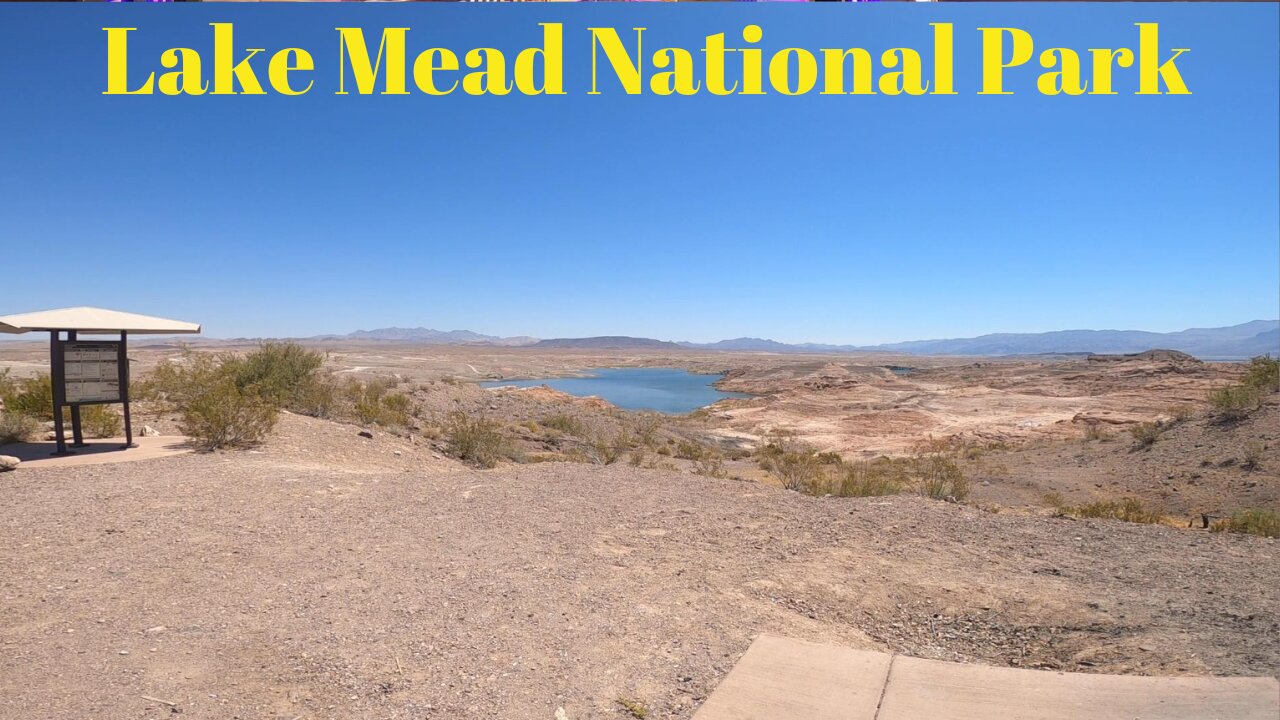Premium Only Content

a trip to lake mead national park
a trip to Lake Mead National Park
Lake Mead National Recreation Area, located in the southwestern United States, encompasses one of the largest and most popular reservoirs in the country, Lake Mead. Here’s a detailed description of the park:
Location and Geography
Location: Lake Mead National Recreation Area spans southern Nevada and northwestern Arizona, encompassing Lake Mead and Lake Mohave. It is located about 30 miles southeast of Las Vegas.
Geography: The area includes diverse landscapes, from expansive desert terrain and mountain ranges to deep canyons and scenic valleys. The park covers approximately 1.5 million acres, offering a variety of natural settings for visitors to explore.
History and Significance
Creation: Lake Mead was formed by the construction of the Hoover Dam on the Colorado River in the 1930s. It was the first national recreation area designated by Congress in 1964.
Cultural Significance: The area has a rich history, with evidence of Native American habitation dating back thousands of years. Historic sites within the park include ancient petroglyphs and remnants of early settlements.
Recreational Activities
Boating and Water Sports: Lake Mead and Lake Mohave are major attractions for boating, fishing, swimming, kayaking, and jet skiing. Marinas and boat rental services are available for visitors.
Hiking and Biking: The park features numerous trails that vary in difficulty, offering opportunities for hiking, biking, and exploring the rugged desert landscape. Popular trails include the Historic Railroad Trail and the River Mountains Loop Trail.
Camping: There are several campgrounds and RV parks within the recreation area, providing both developed and primitive camping options. Campers can enjoy the natural beauty and tranquility of the desert environment.
Fishing: Anglers can fish for a variety of species, including striped bass, catfish, and rainbow trout. Fishing is a popular activity year-round.
Scenic Drives: Visitors can take scenic drives through the park to enjoy breathtaking views of the lakes, mountains, and desert landscapes. The Northshore Road and Lakeshore Road offer picturesque routes with plenty of photo opportunities.
Natural Features
Lakes: Lake Mead is the largest reservoir in the United States, with a shoreline stretching over 700 miles. Lake Mohave, created by the Davis Dam, is another significant water body within the park.
Desert Flora and Fauna: The park’s diverse ecosystems support a variety of plant and animal life. Visitors may encounter desert bighorn sheep, mule deer, coyotes, and numerous bird species. The vegetation includes cacti, creosote bushes, and Joshua trees.
Geological Formations: The park features striking geological formations, such as red sandstone cliffs, volcanic craters, and limestone formations. These natural features add to the scenic beauty and geological interest of the area.
Visitor Facilities and Services
Visitor Centers: The park has visitor centers that offer information, exhibits, and educational programs about the area’s natural and cultural history. The Alan Bible Visitor Center near Boulder City is a primary point of interest.
Marinas and Boat Rentals: Marinas such as the Boulder Harbor, Callville Bay, and Temple Bar provide facilities for boat rentals, supplies, and services for water-based activities.
Picnic Areas: Numerous picnic areas are scattered throughout the park, offering scenic spots for day-use visitors to relax and enjoy the surroundings.
Conservation and Management
Water Levels: Lake Mead’s water levels can fluctuate due to drought and water management practices, affecting recreational activities and the local ecosystem. Efforts are ongoing to manage and conserve water resources in the area.
Environmental Protection: The National Park Service works to protect and preserve the natural and cultural resources within the recreation area, balancing recreation with conservation efforts.
Visiting Tips
Best Time to Visit: Spring and fall are ideal times to visit, with mild temperatures and pleasant weather. Summers can be extremely hot, with temperatures often exceeding 100°F (38°C).
Preparation: Visitors should come prepared with plenty of water, sun protection, and appropriate gear for outdoor activities. It's important to be mindful of the desert environment and practice Leave No Trace principles.
Lake Mead National Recreation Area offers a diverse array of recreational opportunities and stunning natural beauty, making it a premier destination for outdoor enthusiasts and nature lovers.
-
 1:45:23
1:45:23
megimu32
12 hours agoON THE SUBJECT: 2008 Called.. It Wants Its Chaos Back!
68.4K20 -
 1:01:53
1:01:53
BonginoReport
14 hours agoPolitical Violence on the Rise in America - Nightly Scroll w/Hayley Caronia (Ep.26) - 04/14/2025
169K108 -
 1:32:42
1:32:42
BlackDiamondGunsandGear
8 hours agoThey Don’t want you to Purchase 2A Related Products?
53.9K4 -
 2:53:36
2:53:36
Joe Pags
12 hours agoThe Joe Pags Show 4-14-25
117K -
 56:14
56:14
Sarah Westall
12 hours agoGlobal Agenda: Starve Small Business of Funds w/ Bruce De Torres
95.9K24 -
 2:17:29
2:17:29
2 MIKES LIVE
15 hours ago2 MIKES LIVE #205 with guest Nick Adams!
69.4K -
 54:38
54:38
LFA TV
18 hours agoThe Bread of Life | TRUMPET DAILY 4.14.25 7PM
68.4K16 -
 37:52
37:52
Kimberly Guilfoyle
13 hours agoThe Trump Effect, Plus More Scandals for Leticia James, Live with Roger Stone | Ep213
86.2K28 -
 1:13:45
1:13:45
Kim Iversen
13 hours agoWe're LOSING The Tariff War With China, How Our Elites Sold Us Out | Oct 7th Rape COVERUP
110K234 -
 1:23:13
1:23:13
Redacted News
14 hours agoTrump declaring MARTIAL LAW on April 20th according to fearmonger liberals, they want civil war
177K262